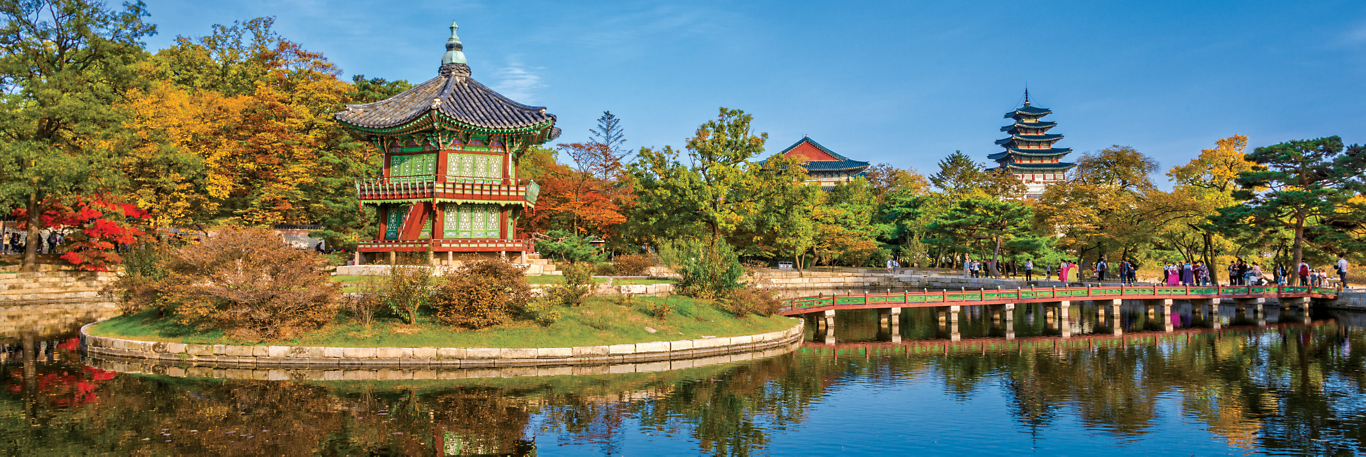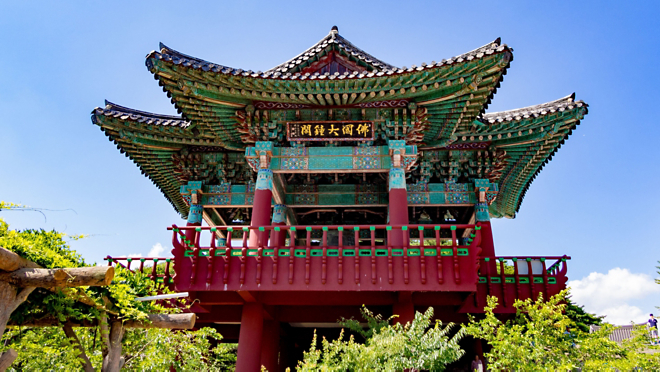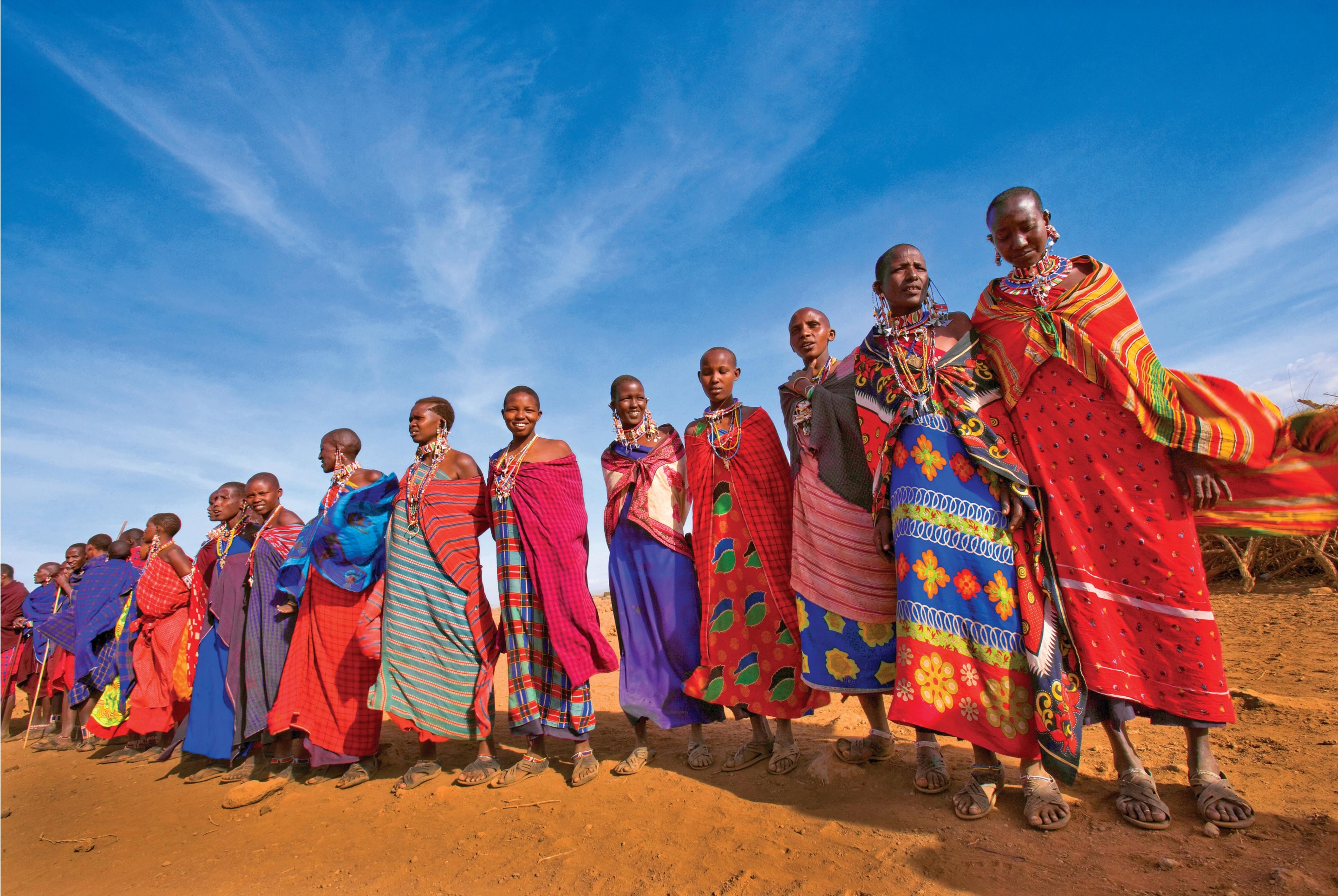You’re receiving this message because your web browser
is no longer supported
We recommend upgrading your browser—simply click the button below and follow the instructions that will appear. Updating will allow you to accept Terms and Conditions, make online payments, read our itineraries, and view Dates and Prices.
To get the best experience on our website, please consider using:
- Chrome
- Microsoft Edge
- Firefox
- Safari (for Mac or iPad Devices)

south korea
Get the Details On Our South Korea Adventure
Find out more about the adventure, including activity level, pricing, traveler excellence rating, included meals, and more

Spend 5 days in South Korea on
South Korea & Japan: Temples, Shrines & Seaside Treasures
O.A.T. Adventure by Land
South Korea: Seoul | Japan: Tokyo, Toba, Kyoto
Adventure Details
Add Adventure
including international airfare
per day
*You must reserve the main trip to participate on this extension.
**This information is not currently available for this trip. Please check back soon.
You may compare up to Adventures at a time.
Would you like to compare your current selected trips?
Yes, View Adventure ComparisonSouth Korea: Month-By-Month
There are pros and cons to visiting a destination during any time of the year. Find out what you can expect during your ideal travel time, from weather and climate, to holidays, festivals, and more.
South Korea in December-March
With far fewer crowds to contend with at iconic sites, winter in South Korea can be a delightful time to visit. But you can expect cold temperatures and frequent periods when the country is blanketed in crisp, white snow. Temperatures in Seoul range from the low 20s to mid-40s (ºF). It is about 10 degrees warmer in Gyeongju and along the southern coast.
Holidays & Events
- Mid-January: The Taebaeksan Snow Festival is held annually in Taebaek, a small mountain town in Gangwon Province, and is famous for its giant snow sculptures.
- January & February: One of South Korea’s most popular celebrations, the Hwacheon Ice Festival is an annual 23-day festival where more than a million visitors enjoy activities like ice fishing, bare-hand fishing, bobsledding, viewing ice sculptures, and more.
- Early March: Jeju Fire Festival is a four-day celebration of spring featuring torch-lit processions, stone lifting contests, and jwibulnori, where people spin around cans filled with burning wood or charcoal.
Must See
Korea is a mountainous country, and the winter months are perfect for journeying almost anywhere outside of Seoul to take in breathtaking scenes of the country when it is blanketed in snow and turns into a white wonderland. The mountains in winter are also great for both skiing and hiking, and as you get farther south you can find rolling hills of pearly white snow.
Watch this film to discover more about South Korea
South Korea in April-June
During the spring months, the South Korean countryside comes alive with blossoming flowers and lush greenery. One of the most popular times to visit also means it can be crowded at popular sites. Expect mostly sunny days and temperatures ranging anywhere from the 50s to the 80s (ºF).
Holidays & Events
- Early May: The Lotus Lantern Festival is an annual celebration of Buddha’s birth. In the days leading up to the popular festival, over 100,000 brightly colored lanterns are hung around the streets of Seoul.
Must See
April is cherry blossom season in South Korea. It is a magical time throughout the country, and especially in places like Gyeongju, as a myriad of pink flowers bursting into bloom.
Watch this film to discover more about South Korea
South Korea in July-August
Summers in South Korea are generally warm and wet, with July and August seeing the arrival of monsoon rains. The average temperature during these months is about 70°F. Many South Koreans escape to the coastal cities and beaches to escape the heat and humidity, so you can expect crowds along the coast.
A typhoon is possible during the summer months, but rare: Japan and China shield South Korea from most major storms.
Holidays & Events
- Late July: Each summer, hundreds of thousands of visitors descend on the coastal city of Boryeong for the Boryeong Mud Festival, which celebrates the healing properties of the local mud. Getting dirty has never been this much fun.
Watch this film to discover more about South Korea
South Korea in September-November
With the summer rains gone, South Korea is bathed in shades of orange and red as the autumn leaves start to bloom. Mild temperatures (averaging 60 to 70°F) and abundant natural beauty make these months close rivals to spring at the best time to visit.
Holidays & Events
- Mid-late September: Chuseok is an annual autumn holiday honoring ancestors and centered around cultural traditions and family bonds.
- September/October: Typically beginning in late September, Andong Mask Festival is a 10-day celebration of dancing, games, and cultural exhibitions.
- October: Icheon Rice Festival is held annually in mid-October when farmers working in the rice fields and city dwellers alike become united in a feast celebrating good harvest.
Must See
Seoul Lantern Festival is a two-week celebration that takes place each November where downtown Seoul comes alive with bright lanterns and glittering lights for early winter.
Watch this film to discover more about South Korea
Average Monthly Temperatures
High Temp Low Temp
South Korea Interactive Map
Click on map markers below to view information about top South Korea experiences
Click here to zoom in and out of this map
*Destinations shown on this map are approximations of exact locations
Seoul

Seoul rose like a phoenix from the ashes of the Korean War, becoming known as the “Miracle on the Han River” thanks to the waterway that bisects the city. Here, you’ll find a 123-story skyscraper peering down on traditional Korean homes and palaces. Where an elevated highway once cut a roaring path, now a restored sunken creek brings fresh, cool air to the heart of downtown. Public art pieces, striking modern architecture, and futuristic waterfront parks all contribute to Seoul’s status as a UNESCO City of Design.
The city’s love for design goes back many centuries. Changdeokgung Palace was built in 1405 with a mountain behind it and a stream in front—a harmonious nod to feng shui. In Bukchon, visitors can wander in the narrow lanes between hanok, traditional Korean homes topped with slanting tile roofs. Above it all, the 600-year-old city walls thread their way along the four peaks that overlook the city—in the days of the Joseon dynasty, the gates were opened and closed each day to the sound of ringing bells.
Explore Seoul with O.A.T. on:
Demilitarized Zone (DMZ)

Ideologically opposed since the end of World War II, North Korea and South Korea’s conflict came to a head during the Korean War—and resulted in the creation of a buffer zone over two miles wide and 160 miles long, known as the Demilitarized Zone (DMZ). Within the DMZ lies the Joint Security Area, a truce village where the two Koreas—the Democratic People’s Republic of Korea to the North, and the Republic of Korea to the South— meet and negotiate.
While military activity is forbidden within the DMZ, both sides are lined with electric fences, land mines, and fully-armed soldiers on constant patrol. The area immediately surrounding the DMZ has been on high alert for over six decades, and the tension has only grown in recent years. Very rarely, a soldier from the North will cross the no-man’s-land to defect to the South. The DMZ is the closest most outsiders will ever get to North Korea, and observatories offer a glimpse across the border.
Explore the DMZ with O.A.T. on:
Yangpyeong Village

Located just an hour outside of the bustling city of Seoul, rural Yangpyeong Village transports visitors back to a simpler time. Family-owned farms grow and harvest seasonal produce using traditional methods. Our small group will have the opportunity to visit one of these farming families where we will help with the harvest, share a meal, and ask our hosts any questions we may have about daily life and the village's traditions and local culture.
Explore Yangpyeong Village with O.A.T. on:
Traveler Photos & Videos
View photos and videos submitted by fellow travelers from our South Korea adventures. Share your own travel photos »
